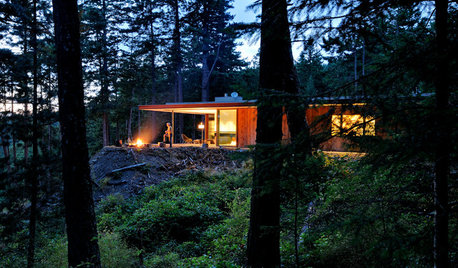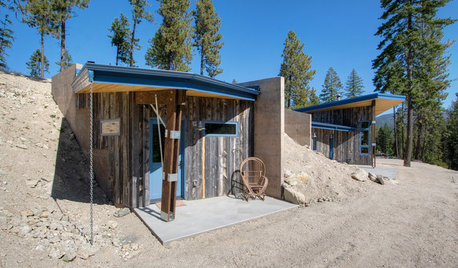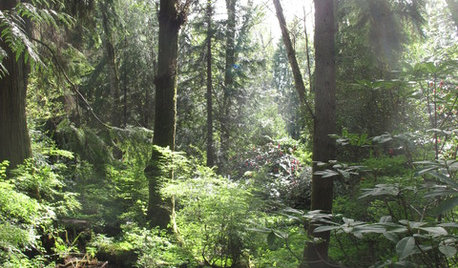Washington state scrambles to fight massive tree die-offs
By CRAIG WELCH
The Seattle Times
SEATTLE -- So many pine, fir and spruce trees in the Northwest are riddled with bugs and disease that major tree die-offs are expected to rip through a third of Eastern Washington forests - an area covering nearly 3 million acres - in the next 15 years, according to new state projections.
Because Washington's forests are deteriorating so quickly, the state commissioner of public lands last week said he'll appoint an emergency panel of scientists and foresters to seek ways to stabilize or reverse the decline.
The problem is largely centered on tree-killing scourges such as the mountain pine beetle, which is spreading rapidly and getting into ever higher-elevation trees such as the troubled whitebark pine.
The number of acres of trees damaged in the past decade by diseases such as blister rust and invasions of western spruce budworm and bark beetles is more than twice what it was in the 1990s - and three times greater than in the 1980s.
That dramatic increase has state officials eager to avoid becoming the next Colorado or British Columbia, both of which have seen millions of acres of forest wiped out in recent years by insects.
"If you don't get started doing something soon, it will quickly overwhelm your capacity to respond," said Aaron Everett, state forester with the Department of Natural Resources (DNR). "I'm certainly not going to sit by and watch it happen here without doing anything."
Few ecologists are eager to just let nature take its course. That could expose the region to potentially catastrophic wildfires, upend wildlife migration corridors and alter forest hydrology, which determines when and how much water is available to all-important river systems.
But solutions may prove complex, expensive, politically difficult or elusive. That's because the most significant weapon available to combat forest decay is logging.
Each type of forest and mix of trees responds differently to particular types of timber harvest. And experts disagree over whether cutting down and thinning out trees will always curb the spread of bugs in some of the hardest-hit forests.
"I come from an agency with a strong conservation background, and through time I have come to the conclusion that thinning forests to increase resilience in the face of changing conditions is sometimes a necessity," said Nate Stephenson, an ecologist with the U.S. Geological Survey in California. "If you've got a forest that's so crowded that the trees are so stressed, sometimes you can reduce the probability of an outbreak by thinning."
But University of Washington professor Jerry Franklin, the old-growth expert whose research helped end most federal-land clearcutting in the Northwest in the 1990s, said that was less true in the lodgepole pine stands most affected by bark beetles.
"There's not much evidence you can control an outbreak of beetles in lodgepole," he said. "We need to be real honest about what we can do. You can cut in front of it, and take away the potential host, but that's not going to help what you leave standing."
The situation has been decades in the making.
Since land managers suppressed wildfires for so long, many trees in Eastern Washington's dry forests are the same age, about a century old. That means they're weak and susceptible to natural diseases and bug infestations - but there aren't young, healthy trees around to stop or slow the annihilation.
At the same time, federal biologists say, warming temperatures have allowed deadly bugs to reproduce faster, survive through winters and reach trees at higher elevations. That's how hundreds of thousands of whitebark pine trees, which the U.S. Fish and Wildlife Service recently determined belong on the endangered species list, wound up infested by pine beetles.
The potent combination helped drive the number of acres of damaged forest in Washington in 2009 to 1.9 million, the highest level in 40 years.
"I've traveled quite a bit lately in Eastern Washington, and there's hardly anywhere you can go where you don't see problems," said David Peterson, a biologist with the U.S. Forest Service's Pacific Research Station. "I think it's going to continue."
Lands Commissioner Peter Goldmark, a Democrat, called the trend alarming, and decided last week to initiate the first step of the state's forest health "hazard warning."
He is soliciting letters of interest from scientists and foresters based on a selection criteria set by the Legislature. He will appoint a panel in December.
That panel will debate options to reinvigorate forests, likely focusing on various types of timber harvest.
"It's not that anyone's objective is to thin every acre of Eastern Washington forest," said Everett, the state forester. "This is about ID'ing where that might be appropriate."
In some cases, such as along Highway 97 between Interstate 90 and Leavenworth, Chelan County, an area hard hit by spruce budworm, even Franklin at UW suspects thinning out grand firs and leaving more resistant ponderosa pine and larches could help reduce the spread of infestations.
"I am a strong advocate of active management, and I could see doing restoration-type thinning there," Franklin said. But he also pointed out that some of those areas are home to threatened northern spotted owls.
"While some of us have argued that by trying to maintain large contiguous blocks of that habitat either fires or insects or both are going to get it, you still run up against a real resistance from environmentalists," Franklin said.
Peterson, meanwhile, said areas thick with mountain pine beetles may pose a different challenge. There, many smaller-diameter trees would need to be removed to provide more light and water to larger, healthier, bug-resistant trees.
But to be effective, "we'd need to take action very quickly and over a significantly large area, before we get massive outbreaks," Peterson said. "And we're used to focusing on small events on small time scales."
Finding ways to resolve these conflicts, Everett said, is why DNR will be bringing together experts.
"If there are matters in dispute, we'll ask our scientists to make recommendations," he said.
http://www.miamiherald.com/2011/11/24/v-fullstory/2517138/washington-state-scrambles-to.html#ixzz1edC4GNoz















Toronado3800 Zone 6 St Louis
aspenacres
Related Discussions
Roundup on tree leaves- Swamp Magnolia
Q
Water useage in an arid state
Q
Willis Orchard trees arrived Thursday
Q
50% Honey Bee Die off in USA - Largest ever
Q
ilovemytreesOriginal Author
alabamatreehugger 8b SW Alabama
wisconsitom
Smivies (Ontario - 5b)
salicaceae
brandon7 TN_zone7
saccharum
botann
alabamatreehugger 8b SW Alabama